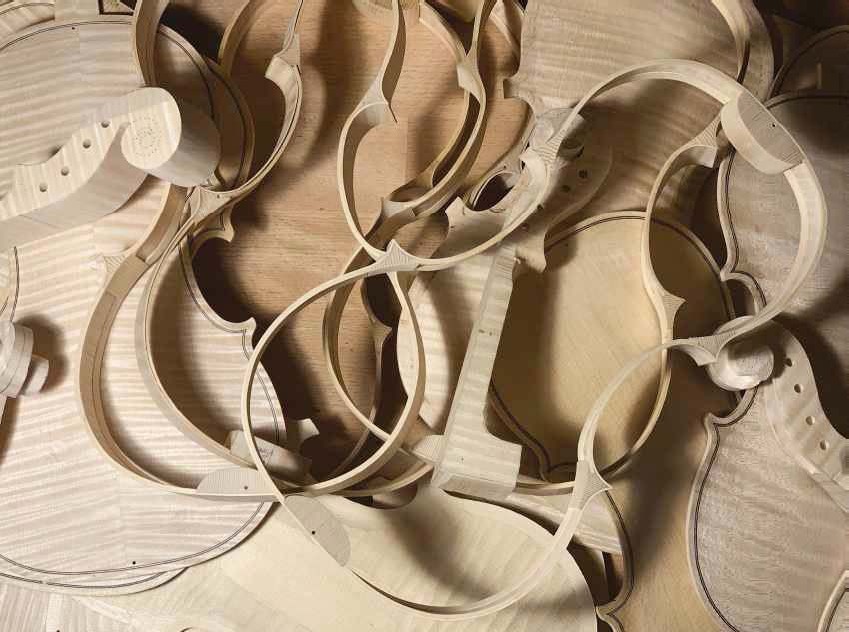
ALL PHOTOS COURTESY LUAN AMORI
If you can’t measure it, you can’t manage it,’ wrote the statistician W. Edwards Deming in 1993. Since time immemorial, violin making has been treated as an artisanal pursuit, one that has survived the streamlined production processes of the Industrial Revolution and remains the domain of luthiers at their workbenches. Artisans use their craft as a form of creative expression, eliciting the admiration of those who appreciate it; and their products are generally valued more highly than those created through a massproduction process, with customers seeking both uniqueness and authenticity, as well as often a bespoke instrument catering to their individual needs. For this and other reasons, there have been very few attempts to examine the production process behind making a stringed instrument using traditional methods; but is it possible that such a investigation, based on those used in industrial engineering, couldthelp us streamline the process and maximise its eiciency? For the study described in this article we tracked the process of making a copy of the 1740 ‘Heifetz’ Guarneri ‘del Gesù’ violin at our workshop in Curitiba, Brazil, investigating the total amount of time and money invested in its creation, and then attempt to draw conclusions on the points that might most easily be modiied to make the process more time- and cost-eicient.
To give some idea of our starting point: Amorim Fine Violins Cremona is considered a small family business and its production structure can meet the demand of about ive instruments per year.the delivery time for a new order is two years. It has a working staf of six, four of them directly linked to production, which is divided between services, restoration and violin making. Since the employees have diferent skill levels of aptitude, the division of tasks is organised by their complexity.the making is mainly carried out by Luiz Amorim.
Leggete l'articolo completo e molti altri in questo numero di
The Strad
Opzioni di acquisto di seguito
Se il problema è vostro,
Accesso per leggere subito l'articolo completo.
Singolo numero digitale
July 2019
Questo numero e altri numeri arretrati non sono inclusi in un nuovo
abbonamento. Gli abbonamenti comprendono l'ultimo numero regolare e i nuovi numeri pubblicati durante l'abbonamento. The Strad
Abbonamento digitale annuale
OFFERTA SPECIALE: Era
€57,99
Adesso €45,99
fatturati annualmente